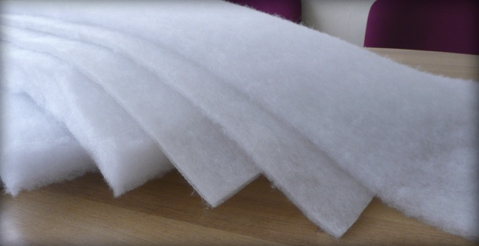
A synthetic winterizer is a non-woven fabric that consists of special synthetic fibers and has a three-dimensional structure with a uniform thickness over the entire surface. The synthetic winterizer is used as a lining and forming material in the production of warm clothes, and is also quite successfully used in the furniture industry as a soft layer.
Raw materials for the production of synthetic winterizer
The starting material in this production is polyester fiber with the addition of either cotton or wool fibers. In its structure, the synthetic winterizer consists of several parallel layers of fibers. However, today there is already equipment for the production of synthetic winterizer, which provides the manufacture of products of higher quality, due to the multidirectionality of the fibers.
Equipment and production technology
The modern synthetic winterizer production line provides for three main production technologies, which have some technological differences and, consequently, cost: adhesive, needle-punched and thermal.
The glue method is the cheapest type of production and involves gluing fibers with a special glue, which makes the structure of finished products loose, elastic and fluffy. However, there are drawbacks to such a product - it does not withstand washing and temperatures from +50 aboutWITH.

When using needle-punched technology, the synthetic winterizer turns out to be better than that made according to the previous method. This technology is based on the principle of bonding fibers with special needles that bind them and connect them to the surface of the canvas. Finished products turn out to be unusually dense and quite resistant to various mechanical stresses, washing and even dry cleaning.
And finally, the last of these technologies is thermal. A synthetic winterizer made using this method has the highest level of quality, low weight, high performance properties and resistance to various influences. The technology is based on the processing of fibers at high temperatures, due to which there is a partial melting and gluing into a whole web.
Equipment composition and production process
Modern industry can offer various equipment for the production of synthetic winterizer, its various modifications and configurations. The structure of these units directly depends on the production technology (already from the finished fiber or a full cycle).
If it is planned to manufacture products from finished fiber, the equipment for the production of synthetic winterizer should include: a compartment for loading raw materials, a scratching machine, a pinch-sizing machine, a furnace and a winding unit. This is the most common type of production, providing for the following steps. First, the polyester fiber is loaded, which is subjected to mixing, oiling and combing.
As a result, bonding and formation of a padding polyester web occurs. The final stage - the semi-finished product is placed in a sintepon production furnace, where the threads melt a little and are even more tightly intertwined. So it turns out quite dense, fairly elastic, resistant to water exposure and various temperature conditions.
In the event that the manufacturer does not want to buy polyester fiber, but prefers to make it himself, the equipment for the production of synthetic winterizer will need to be supplemented with the corresponding machines that make polyester yarns.
Characteristics of production equipment

The equipment for the production of syntepon has the following characteristics:
- the ability to produce finished products of various widths;
- high productivity (at least 10 thousand linear meters per day);
- energy-intensive production (with round-the-clock loading - 25 thousand kWh per month);
- a small number of staff (2 people);
- vacuum packaging of finished products.
It should also be noted that training employees to work with equipment is best done directly at the production site.








